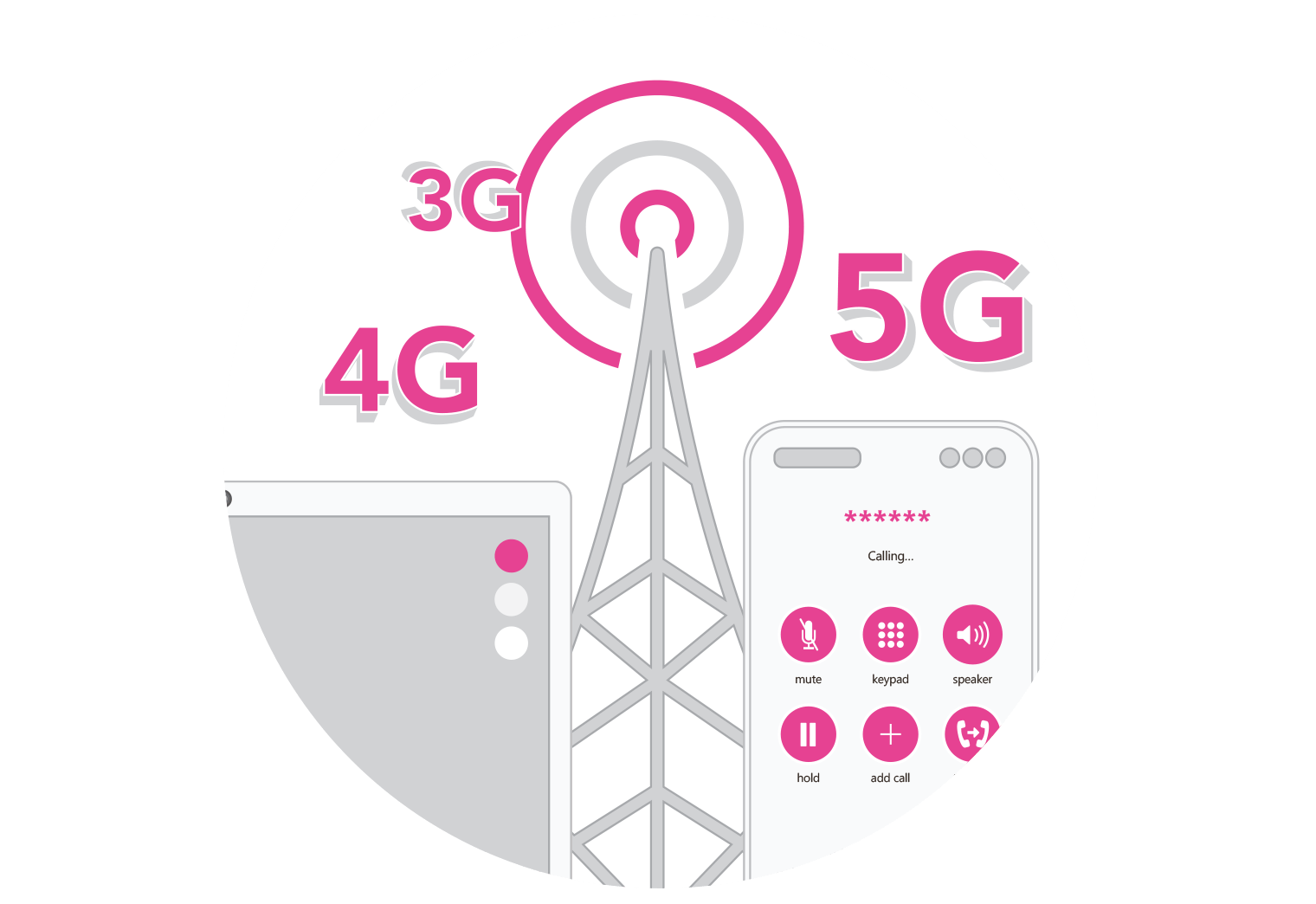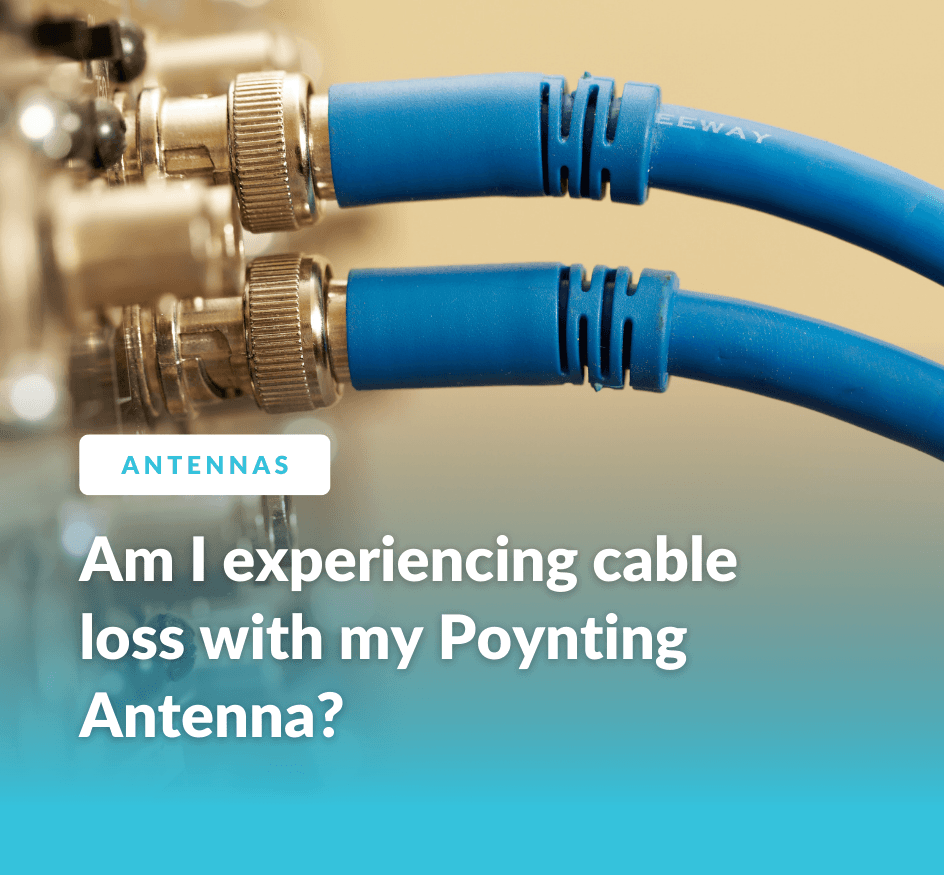What Is Signal Loss (Attenuation)?
Signal loss, or attenuation, is the loss of energy experienced by radiofrequency waves as they travel through a medium. The loss in energy results in a corresponding loss in how well the signal, sent from the transmitter, is relayed to the receiver.
When we’re talking about cable loss specifically, we’re talking about signal loss experienced by RF (radiofrequency) waves as they pass through an RF cable, also known as coax/coaxial cable, or SMA cable.
We’ll discuss how coaxial cable affects or even induces signal loss and what this can mean for the user.
We’ll also discuss possible solutions for those affected by cable loss.
Does Length of Coaxial Cable Affect Signal Loss?
Yes, the greater the length of coax cable you use, the more signal loss you will experience.
This is due to a number of factors.
Loss Due to Resistance
The first of these is resistance.
RF energy is conveyed through a conductive medium or material using electrical energy.
Unfortunately, no medium is an ideal, or perfect, conductor. This means all materials have some resistance. So long as resistance is not zero (which it never is) some energy will be lost as heat.
In your coax cable, the copper core is the conductor.
Despite copper being an excellent conductor, it still has some resistance. This means that some electrical energy must be lost as heat.
Naturally, then, the longer the length of cable, the more resistive material your signal has to pass through, leading to greater loss of energy and, therefore, loss of signal.

Dielectric Loss
Resistive loss (just discussed) increases in inverse proportion to frequency.
This means that much higher frequencies will see only slightly greater signal loss as a result of resistance.
On the other hand, dielectric loss, which we’re about to discuss, increases linearly, or at a ratio of 1-to-1, with frequency.
This means dielectric loss impacts higher frequencies to a much greater degree and that higher frequencies are subject to more signal loss overall.
What is dielectric loss?
Most RF cable designs incorporate insulation between the shielding and the copper core. Insulating materials act as what is called a ‘dielectric’.
According to Wikipedia, a dielectric material is “an electrical insulator that can be polarised by an applied electric field.”
In other words, whilst with copper we’re dealing with an imperfect conductor, we’re also dealing with an imperfect insulator.
All insulators are dielectrics, but a material is called a ‘dielectric’ when one wants to draw attention to the fact that it can be polarised.
To save getting lost in the weeds, we won’t discuss how, but it’s this polarisation that’s responsible for dielectric signal loss.
For more on cables, see our guide to structured cabling.
Low loss coax often introduces space in the form of air into the dielectric insulator, either by foaming the material, wrapping the dielectric around in a coil vs a solid sheath, or bonding with various forms of polyethylene.
How much signal loss should I expect?
Attenuation is measured in decibels (dB).
Whilst you’ll see vague claims across the internet such as…
- “50-foot cable might result in 20% loss of the original signal.”
- “100-foot cable might result in a 33% loss of the original signal.”
…the truth is that this depends very much on the factors at play.
Therefore, there is no “maximum length coax cable before signal loss”.
Different frequencies of RF signal experience attenuation differently, with higher frequencies experiencing far more cable loss.
That’s down to the following equation, which calculates signal loss in dB/100m.
F(K1 + K2 + CLF) = CL
Where F is frequency, K1 is the resistive loss, K2 is the dielectric constant and CLF is the connector loss factor.
The output of the equation, CL, is the cable loss in dB per 100 feet.
Frequency is involved at every ‘stage’ of the equation, having interplay with every other variable.
Therefore, if your challenge has multiple possible solutions and one of these involves using lower frequencies than another, it probably pays to go with this solution.
When it comes to wireless broadband applications, LTE/5G RF frequencies range between 698-960MHz and 1710-3800MHz, while WiFi frequencies exist at 2.4GHz and 5-6GHz.
Since WiFi signals operate at such high frequencies, you can expect high signal losses of up to 8dB per metre on the 2.4GHz band alone. That’s huge if you’re using a 10dB antenna.
Since the frequencies used for LTE/5G can be almost an order of magnitude lower, signal losses will be much lower too.
How Can I Increase Signal Strength with a Coaxial Cable?
So what can you do about signal loss if you’re experiencing it?
There are two possible solutions:
Solution One: Change Cable Type
As we’ll argue, changing the cable type you’re using is not the ideal solution.
Why? It doesn’t tackle either of cable loss’s key contributing factors: RF frequency and cable length.
Whilst a ‘better’ coaxial cable will see less signal loss, it will also cost you far more money. And this means nothing in practice if you’re cabling high-frequency signals dozens of metres since you’ll still see significant losses.
What’s more, cable types are confusing.
Manufacturers tend to devise their own names and codes and provide charts that map these to an equivalent RG number.
RG ‘radio grade’ numbers are a convention left over from World War II and still might mean nothing to you. What’s more, the connector type impacts signal loss as well, giving you yet another variable to consider.

If you’d like a shot at delving into this, check out this guide.
Or, as a general rule, look for the following code prefixes if you’re looking for good antenna cables:
HDF cable
- Closed-cell polyethylene dielectric low loss flexible cable.
- HDF cable is best used for WiFi frequencies in the 2.8 & 5-6GHz ranges.
LMR cable
- Low loss, flexible broadband cable often used in WISP and other wireless applications.
On the whole, though, sorting out what the listed code on any given cable means is confusing, time-consuming and has limited upside for the average user.
The single safest course of action is to trust a technical advisor with the decision as to which antenna cable is best for you, and then to limit the cable length as much as possible.
If any of your cables needs to be long, it should be the ethernet cable. Subbing SMA cable for a longer ethernet cable will net you far less loss once the signal has passed through your modem to be demodulated and digitised.
Solution Two: Shorten the Cable
We know what you’re thinking. Short of sticking your 5G router to the antenna itself, this is impossible. We’ve recommended positioning your antenna externally before. Surely that necessitates long SMA cables?
Not anymore.
Thanks to Poynting’s new ePoynt range, you can mount your 5G router literally inside your antenna’s enclosure.
This limits coax cable lengths to mere inches.
Even if you choose not to opt for an ePoynt product, you can always choose a weatherproof, industrial 5G router and mount it externally right next to your antenna. If you can’t find one, though, a solution like ePoynt is bound to improve your down- & upload speeds.
Poynting’s New ePoynt Antennas
What are Poynting ePoynt Antenna Enclosures?
Poynting’s new ePoynt series allows users to mount a 5G/LTE router (sold separately) directly within the antenna enclosure. The EPNT-2 will accommodate routers as large as 185x145x45mm.
With the help of a SIM extender, you’ll even be able to access and exchange the router’s SIM without having to remove the antenna’s cover.

These products were designed specifically to solve the problem of cable loss through long runs of SMA cable.
Unlike most antennas, it’s the ethernet cable that will run to a longer length, while the RF cable remains very short - just inches long. Since the router has already demodulated and digitised the RF signal, it is subject to negligible loss through the ethernet cable.
The EPNT series ships with a variety of mounting options, with wall-, pole- and window mounts included.
Since glass is electromagnetically transparent, you can mount the antenna inside or outside so long as you’re using a directional antenna and you know you have a cell mast on that side of the building.
Omni-directional antennas are a bit trickier since they won’t benefit from signals coming from other directions if you mount them indoors.
Poynting EPNT-1 vs EPNT-2
The Poynting EPNT-2 is a uni-directional, high-gain, cross-polarised antenna, while the EPNT-1 is an omni-directional, cross-polarised antenna.
Both are dual-purpose LTE/5G & WiFi antennas, offering 4x4 MIMO on the LTE/5G frequencies and 2x2 MIMO on the WiFi frequencies.
Though functionally a uni-directional antenna, the EPNT-2 includes two omni-directional antennas inside. Set it up as a directional antenna with line of sight to your primary base station and, if there are other base stations around also, the omni-antennas will pick up signals from these stations too. Especially when there are reflections from nearby buildings, creating multiple uncorrelated paths for the 4x4 MIMO.
Both products are IP65-rated and are weather, dust and vandal resistant.
For a full product breakdown of these products, visit their product pages.
Why Should I Use One?
According to Poynting themselves, “By closing the distance from antenna to the router, we can drastically reduce the most important factor impacting router to external antenna connection: cable losses.”
Plus, Poynting’s own testing shows that switching to a short-SMA cable solution like the ePoynt series can lead to increases in download & upload speeds of more than two times.
These products have been designed as a specific solution for the issue of cable loss by minimising necessary coax cable lengths.
The end result: maximum RF signal is carried over between the network base station and the router. Higher throughput means a more reliable connection and a better user experience.
What Routers Can I Use?
All modern PoE routers that fit inside will work but, since there won’t be room for a power cable, you’ll need to use a router powered over PoE for the ePoynt series antennas.
A full list of compatible routers, curated and updated by Poynting, can be found here.
The list includes router models by Cisco, TP-Link, Teltonika, Huawei, Cradle Point and more.

Wrapping Up Signal Loss in Coax Cables
Signal loss as a result of internal resistance and dielectric loss impacts higher RF frequencies more than lower ones.
Changing the cable type can help, but for most users the cost to benefit ratio is poor.
The remaining solution, minimising the length of cable you use, can be difficult to implement without the right tools.
Poynting's new ePoynt series, starting with the EPNT-1 and EPNT-2 models, are designed to solve this specific problem, maximising bandwidth by minimising RF cable lengths. The end result is a more reliable signal and a better user experience.
You can purchase Poynting antennas here.
You can use Teltonika 4G/LTE routers with the ePoynt series. For a full list of compatible routers, see these here.


